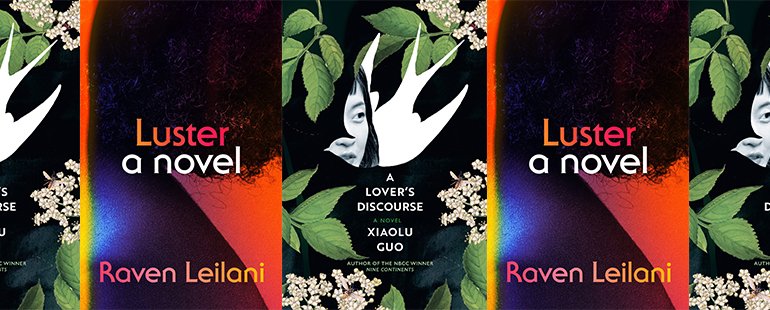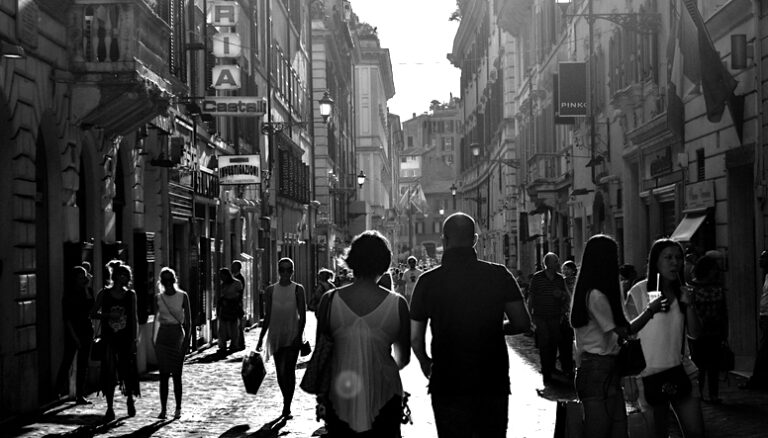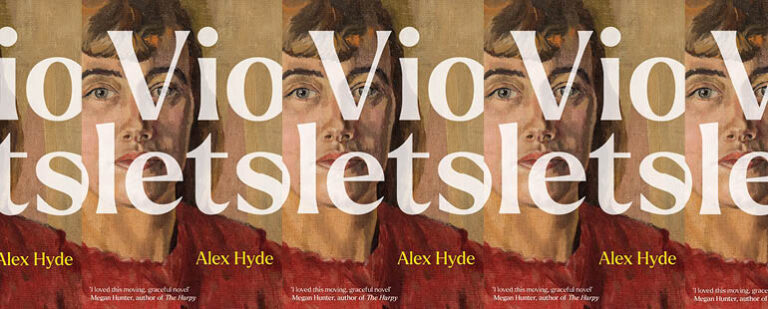Luster, A Lover’s Discourse, and the Portrayal of Whiteness

Whiteness cannot bear to be looked at. See the elaborate costumes of rioters who stormed the Capitol, or the hoods their predecessors wore. This unwillingness to be scrutinized makes it difficult to portray whiteness, a phenomenon often only seen in its contrast to color. In recent years, however, academics and artists have launched new efforts at envisioning whiteness, including The Racial Imaginary Institute, the project seeded by poet Claudia Rankine with a $625,000 MacArthur “genius grant.” In 2017, the year of its launch, the institute declared that “the volume on whiteness has been turned up.”
Unfortunately, those turning the dial are still overwhelmingly people of color. In the recent novels Luster, by Raven Leilani, and A Lover’s Discourse, by Xiaolu Guo, two female narrators—one a Black American, the other British Chinese––dwell on this cross-racial gaze, othering the white men who are the objects of their physical affections. In doing so, these dry, sharp-eyed protagonists attempt to reverse the gazes of centuries––exoticizing, orientalizing, dehumanizing gazes––by paying an anthropological attention to their partners’ bodies, speech, and behaviors. This constant observation, even when couched in wit, reveals the heightened attention people of color expend to remain desired by those in power and, by extension, to survive.
Leilani and Guo both use the act of painting as a metaphor for this revelatory process—to love someone is to attempt to see that person’s truest version, a goal shared in visual art. The challenge in capturing whiteness on canvas, however, is that white is one of the few colors that cannot be created by mixing other paints. One must begin with pure white. In addition, as Annie Dillard writes in The Writing Life, an artist paints by concealing her initial sketches and daubs: by obscuring, not revealing. Leilani and Guo’s novels show the slipperiness of whiteness, how difficult it is for either artist or writer to pin down.
Luster ostensibly centers on a relationship between Edie, a young Black woman in New York, and an older white man in a newly open marriage. He is good and bad in all of white masculinity’s predictable ways: he painstakingly enunciates African American instead of Black, stores a vinyl collection in his suburban basement, and is turned on by hitting and asphyxiating Edie. On their dates, she sees him with brutal clarity, a man with a “soft meaty body” who is unconcerned with death like “most white people who eat beans in the woods undeterred by the fresh fecal evidence of hungry bears.” When she asks if he ever tells lies to make others feel better (that is, white lies), he fussily says no. “Of course, it is not interesting that he has been allowed to live candidly,” Edie reflects. “It is not interesting that he cannot conceive of anything else. He has equated his range of motion with mine. He hasn’t considered the lies you tell to survive.” His unchallenged existence makes him uncomplicated. Edie, a painter, is able to commit him to canvas in a single night.
The more interesting relationship in the book is with the man’s wife, a thin white woman who furiously works out to kickboxing videos. When Edie is evicted from her Manhattan apartment, she moves into the couple’s house and, in her open, unemployed time, photographs its knickknacks so that she can paint them in the privacy of the guest bedroom. Her hope is to capture some essence of this woman and her indecipherable motivations for opening her home to Edie. Later, Edie visits the hospital basement where the wife dissects dead bodies for a living. Edie paints the corpses (“the palette overwhelmingly Caucasian, and so a little tedious”), and on the edges flit the shadow of the wife. Edie takes pride in how she keeps herself “illegible” to others, hiding her emotions and intentions. The white wife, too, maintains her own illegibility, perhaps a defense against the overwhelming mediocrity and self-centeredness of her husband. In the book, he is merely a place for the two women to meet.
Guo opens A Lover’s Discourse with the narrator observing a white man in London—certain, and later uncertain, that he sees her too. Even a mutual gaze, however, Guo writes, does not necessarily mean an equal one: “you were very tall and I was short. Height sometimes disorients our perspective.” The power imbalance created by centuries of imperial history makes seeing another person, even a lover, an inaccurate act. The man, the interlocutor of the text, is half-British and half-German with family ties to Australia, as if his role in the text is to stand in for all of whiteness––its democracy, its fascism, and its settler colonialism, all of them different shapes of the same wheat bread.
The core artistic act in the text is one of copying, which puns on the protagonist’s efforts to integrate into white European society as well as stereotypes about Chinese people in a global economy where “Made in China” is an epithet. On an academic research trip, the protagonist asks a painter in a Chinese village to copy a tiny cell-phone image of The Virgin of the Rocks at the National Gallery in London. The British painting is itself a copy, albeit in a different color scheme, of Leonardo da Vinci’s work by the same name at the Louvre. Through his brush, the Chinese painter portrays whites as seen by other whites, a perhaps more accessible way to capture whiteness. The copyist deliberately omits the haloes above the Virgin Mary and baby John the Baptist, saying the golden rings would make the canvas appear fake. This turns out to be true: the one in the Louvre lacks haloes, too. The implication is that those who best understand whiteness come from the outside.
This act of remaking The Virgin of the Rocks parallels Guo’s own project, whose title is drawn from Roland Barthes’s 1977 hybrid text Fragments d’un discours amoureux, a series of “figures” written from a lover’s point of view, with forays into literature and philosophy. Like Barthes, Guo’s narrator turns the Western canon over and over, musing that she cannot divorce Adolf Loos’s sexual abuse of young girls from the Austrian architect’s early 20th-century treatise “Ornament and Crime.” She agrees with Marguerite Duras’s declaration that Honoré de Balzac’s fiction, famous for its ravenous vacuuming of all perceivable detail, “leaves no place for the reader.” Duras is not accidentally invoked: her 1984 novel, The Lover, depicted a French teenager’s relationship in Indochina with a rich Chinese-Vietnamese businessman, her curious gaze on him a stand-in for Western perceptions of the East.
Leilani and Guo’s novels follow this tradition of looking intensely at one person and seeing multiples––a whole race––in a single body. How many hours of non-white experience are occupied by looking? While those with power can exist, confident they are following the rules they made, those on the margins must survey and surveil. Not to control, but to survive.
I remember this constant labor in the Midwest, where I grew up in a vast territory of highways and driveway basketball hoops, a foreign land even if it was all I’d known. In school I examined, with an anthropologist’s eye, the markers of those girls I could never fully become: their striped, stretchy tops from Limited Too; their faded khakis from Abercrombie & Fitch; the way they casually adopted eating disorders and binge drinking habits, seemingly confident that someone would always rescue them. When, like Guo’s narrator, I moved to England, I felt myself re-engaging in the familiar labor of my childhood, writing a whole mental catalog of speech, dress, and behavior. I was determined, this time, to make my difference undetectable to the people I watched. I learned to ask if others wanted the last of the food at the table to signal I was hungry; I spent hours expounding on the weather to convince people I was qualified for whatever role they were offering. A few months back, during one of the few windows when London wasn’t in some version of lockdown, I went to the National Gallery. High off snacks from nearby Chinatown, I waited in the outdoor line, reading on my phone the latest news about Boris Johnson and other Brexiteers. After fifteen minutes, a friend texted to ask where I was. Everyone else had found their way, or been directed by the museum’s guards, to a second line, one that was closer to the entrance, one I hadn’t seen. I had been blinded by the white glow of my screen.
This piece was originally published on January 25, 2021.


